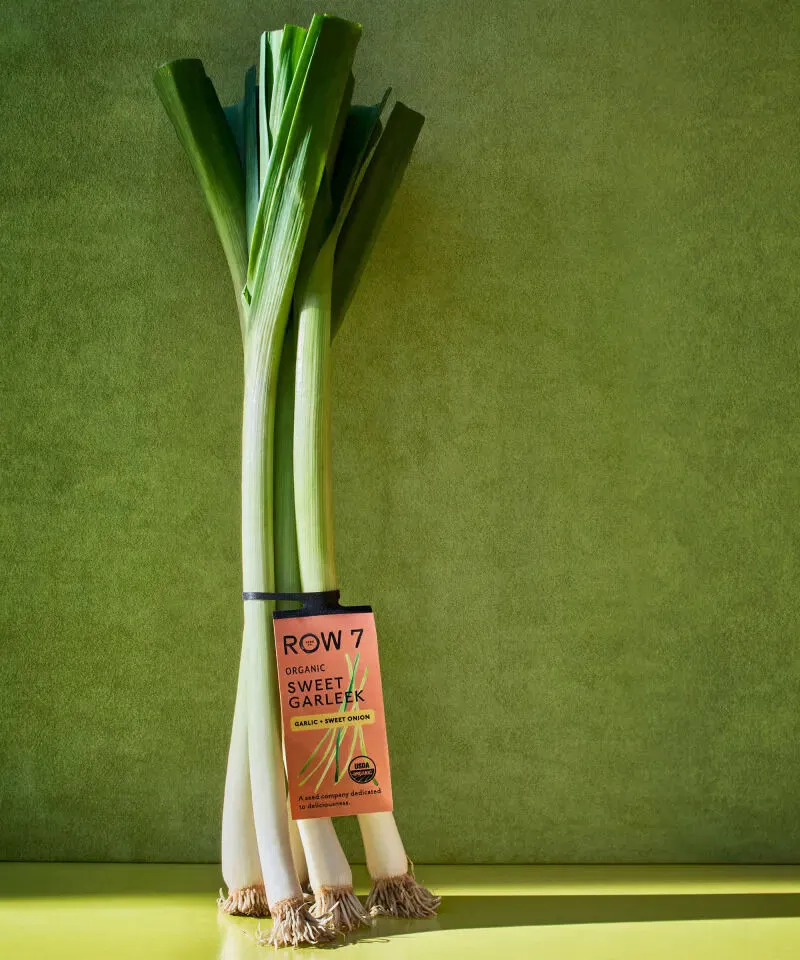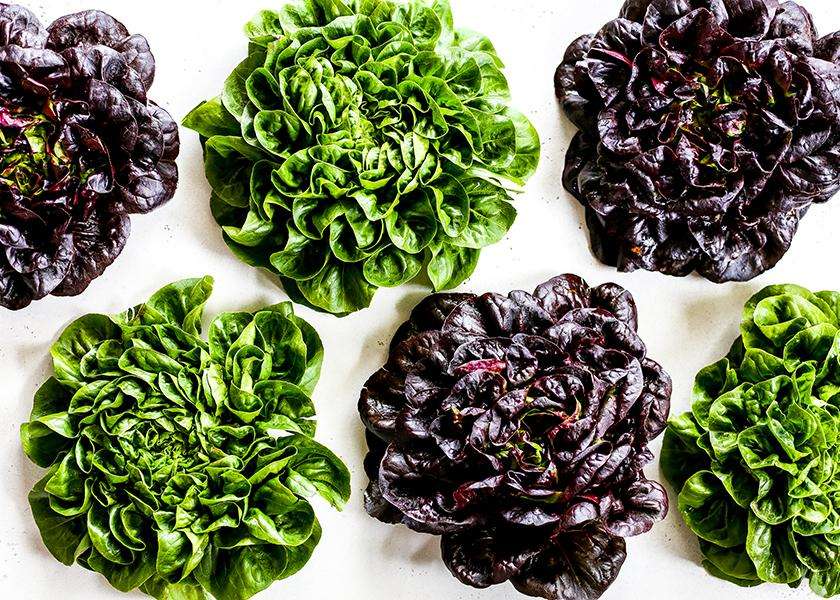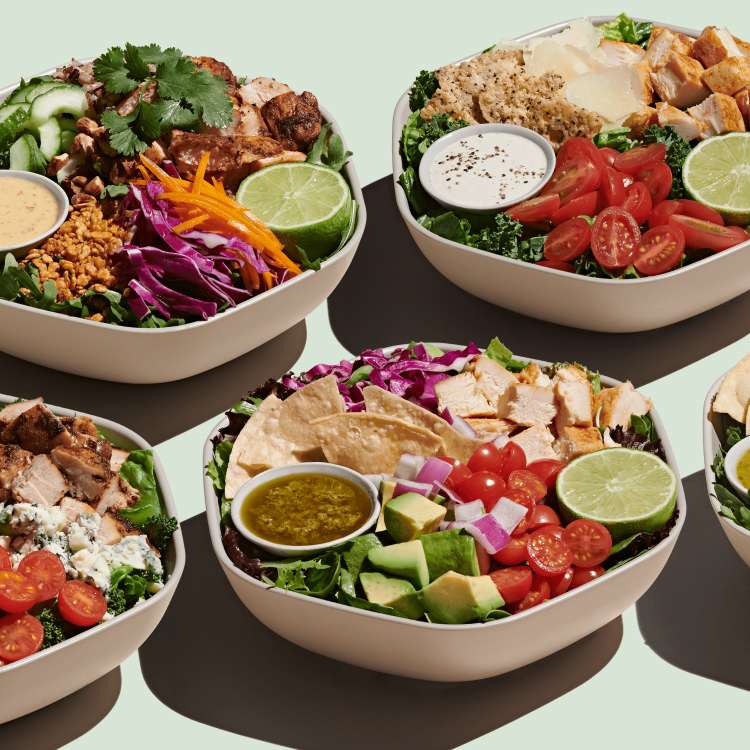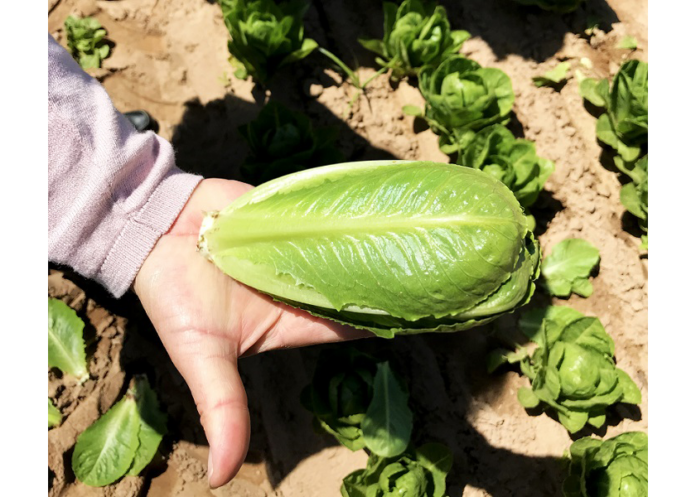“Eat your vegetables” — the command long met with groans and eye rolls from kids and adults alike — might be shaking off its bad rap as innovation turns leafy greens and other veggies into bona fide meal stars.
At the top of its food trend predictions for 2024, leading organic supermarket chain Whole Foods Market says “the OGs of plant-based cuisine are making a comeback,” and they’re doing that by putting the plants back into plant-based offerings.
“We’re seeing new and emerging protein-forward products with mushrooms (technically fungi and not a plant), walnuts, tempeh, and legumes in place of complex meat alternatives,” the retailer says. “Even plant-based milk alternatives are participating, with some brands simplifying labels to just two ingredients — perfect for the vegetarian purist.”
Specialty vegetables
It comes as Time Magazine named renowned chef Dan Barber’s new veggie hybrid, the Sweet Garleek, one of its top inventions of the year. The hybrid — garlic and leeks — which took ten years to develop, has hit Whole Foods’ shelves in New York City, where it costs upwards of $6 a bunch. With the buzz around the Garkeek, Barber is steering his expertise from fine dining to the grocery aisles via his Row 7 Seed Company.

“Garleek is not something anyone was asking for because no one knew the love child of garlic and leek was possible,” Barber said in a statement. The approximately 19-inch-long vegetable boasts a slender white bulb and flat green stems. According to Row 7, the vegetable offers a less intense aroma compared to traditional garlic and delivers a buttery essence when cooked. The vegetable is versatile enough to be grilled, sautéed, or even consumed raw.
The invention of Sweet Garleek is credited to Hans Bongers, who spent a decade crafting the perfect hybrid. The development process included Row 7’s culinary director, Patch Troffer, working alongside 150 international chefs and farmers. Among them, farmer Charlie Muzzarelli shared with Grub Street that Sweet Garleek matures faster than standard leeks and allows for multiple harvests annually, unlike green garlic.
Since its introduction, Sweet Garleek has shown promise in terms of sales, with an impressive sell-through rate of eighty-two percent during its initial three weeks at Whole Foods, as per Liz Mahler, Row 7’s Chief Operating Officer.
As of now, Sweet Garleek is only available in the New York area but plans are underway to launch it on the West Coast and the mid-Atlantic regions before going national in 2024.
For the Michelin-starred chef, Sweet Garleek represents more than just another product; it is an opportunity to redefine food consumption, beginning with the produce aisle.
That’s also the impetus behind California’s Babé Farms’ recent debut of a new collection of luxury vegetables. The launch includes a new variety of leafy greens called Baby Butter Cakes. These petite heads of butter lettuce are named because of their soft, buttery flavor and their cake-like shape.
“They are soft and luscious with ribboning leaves that hold onto all types of dressing,” Matt Hiltner, marketing coordinator for the Santa Maria, CA-based company, said in a statement. “Baby Butter Cakes contain three times more leaves than an average butterhead lettuce. Available in both green and red, they are great for all types of salad, sandwiches, burgers, poké and more.”

Babé is also debuting Ruby Ro-Minis — small heads of crisp lettuce that blend the qualities of iceberg and romaine. Hiltner notes that these are “cute and compact, with the crunch of iceberg and sweet flavor of romaine into one small, tightly enveloped head.”
The company also offers Platinum Blonde Frisée, which is now available as a pre-washed, ready-to-eat salad.
A return to vegetables
So, why the vegetable renaissance?
In part, it’s due to “scrutiny of processing use in the food and drink industry is intensifying,” says Mintel in its 2024 trend predictions report. “Fuelled by discussions about highly, overly or ultra-processed food (UPF), feelings about processing will inspire consumers to look
more closely at ingredients, nutrition and production methods.”
Mintel says by next year consumers will become more aware of the the different levels of processing — “‘ultraprocessing’ is the latest evolution of terms such as ‘junk food’ or ‘clean label,'” Mintel says.
And it’s not just designer vegetables that are taking the spotlight.
According to Mintel’s reporting, 34 percent of U.S. adults say highly processed food is a top concern. And while “root to shoot” whole vegetable dishes — think roasted Brussels sprouts, carrots, or bok choy — have been on menus for years, the new concerns over ultra-processed foods are putting any and all vegetables back into the spotlight.
Nearly half (47 percent) of U.S. fruit or vegetable buyers surveyed by Mintel also say that “processed produce” — think fruit cups and canned tomatoes — are a good substitute for fresh produce and still a better option than ultra-processed foods.
Eater recently reported that restaurants are cashing in on the trend, noting that the “era of the $44 salad” has also arrived. While this high ticket price often includes adding a protein (in Eater’s case, that was skirt steak), the baseline price for common salads like the Caesar, has jumped significantly. Whole Foods’ salad bar as well as those from Sweetgreen can set you back more than $20 a pop, too.

“What’s behind the soaring prices for a simple salad? While there’s no clear explanation,” Robb Report explains, “restaurant prices have been rising across the board, thanks to factors like inflation and the more limited availability of certain ingredients due to supply-chain issues and climate-change-affected crops.”
Mintel says over the next five years, enhanced transparency around food processing will create “better-informed food and drink shoppers.” And it also says minimally processed products that boast higher nutritional value and that are easy to use will “win over” more consumers.
“The demand for natural nutrition from familiar, less processed sources will also increase consumer acceptance of products that reuse nutritious ingredients and that might previously have been
thrown away, such as misshapen vegetables,” Mintel says.
Barber simplifies the message: “Use the whole thing, tender greens and all,” he said in an Instagram post about the Sweet Garleek. “It’s proof of what’s possible when your recipe starts with the seed — not a novelty, but a new kitchen essential.”
Related on Ethos:


